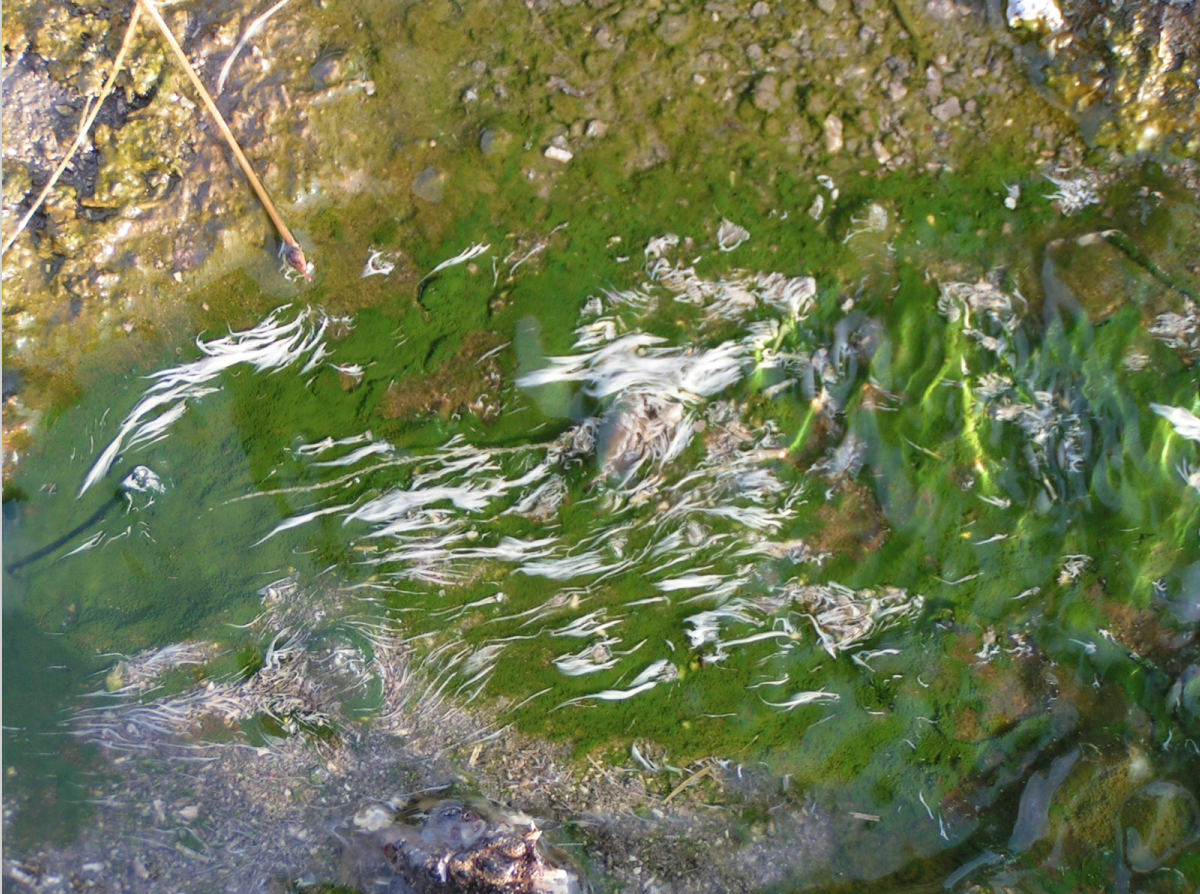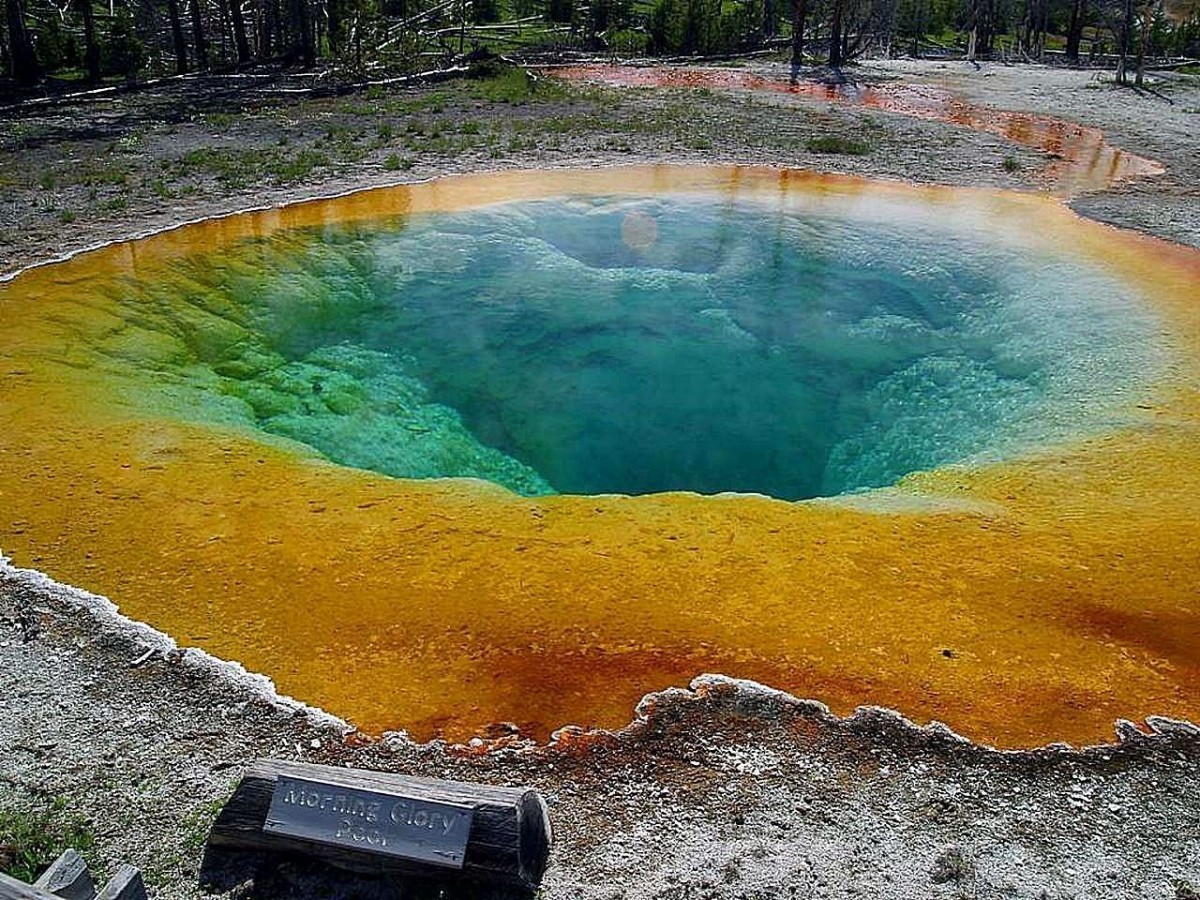Sulfur Bacteria
** Definition, Characteristics and Examples
Definition
Sulfur bacteria are microorganisms that use sulfur and sulfur compounds (sulfite, hydrogen sulfide, and thiosulfate etc.) as a source of energy.
These bacteria are divided into two main groups that include:
Chemolithotrophs (colorless sulfur bacteria) - Some examples of Chemolithotrophic sulfur bacteria include Thiobacillus thiooxidans (Acidithiobacillus thiooxidans), Thiobacillus thiospora, and Thiobacillus neopolitanus. These bacteria grow in supplement that consists of oxidizable sulfur compounds
Photoautotrophs (colored/photosynthetic sulfur bacteria) - Some examples of photoautotrophic sulfur bacteria are Thiomicrospira thvasirae and Thiobacillus aquaesulis. Also known as green sulfur bacteria, these bacteria also need light as an energy source.
* Though they are found in different habitats, they can only be found in places where sulfur or sulfur compounds are available (their primary source of energy).
Characteristics
Chemolithotrophic Sulfur Bacteria
Chemolithotrophic sulfur bacteria are gram-negative organisms commonly found in aquatic environments (e.g. hydrothermal vents, geothermal springs, salt marshes, cold springs, and sewer). However, some species can be found in soil, sulfide-rich industrial sites, solfataras, and biofilms like snottites.
For this reason, they are said to be ubiquitous in nature. Also known as colorless sulfur bacteria, these organisms display high diversity; some of the species have no taxonomic relationship.
* Archaea/Archaebacteria colorless sulfur bacteria: Sulfur oxidizing bacteria of the domain Archaea can be found in the order. Some species in this group include Sulfolobus islandicus, Sulfolobus acidocaldarius, and Sulfolobus solfataricus.
* Eubacteria colorless sulfur bacteria include Thiobacillus denitrificans, Sulfurimonas denitrificans, Sulfurovum lithotrophicum, as well as members of the genus Beggiatoa and Thioploca.
The majority of colorless sulfur bacteria are aerobic. As such, they need oxygen to grow and reproduce. They are commonly found in oxygenated habitats. However, a few species are facultative anaerobes. As such, they can still survive in the absence of oxygen.
In the absence of oxygen, these bacteria have been shown to use nitrogen oxides as the terminal electron acceptor (e.g. Sulfurimonas denitrificans, Sulfurovum lithotrophicum, and Thioploca species, etc.).
Aerobic species are commonly found at the sulfide/oxygen interfaces in hypolimnion, springs, and soil, etc. Here, sulfur is oxidized in the presence of oxygen under aerobic conditions. For instance, in the presence of oxygen, hydrogen sulfide is oxidized by some bacteria resulting in the production of sulfate.
Through their activities, some of these bacteria result in acid production (or acidity) which causes stone and metal corrosion. Thiobacillus thiooxidans, which is one of the most popular sulfur-oxidizing bacteria, uses thiosulfate and sulfide as its source of energy.
Oxidization of these compounds produces sulfuric acid with low pH (as low as 1.0). Because of this level of acidity, these bacteria contribute to the rapid deterioration of steel-reinforced concrete pipes. They have also been associated with damage of stone buildings as well as statues made of similar material.
Colorless sulfur oxidizing bacteria can also be found in habitats with different types of temperature and pH. Depending on the species, they can be found in habitats with temperatures ranging from 4 to about 95 degrees C.
Thermophilic species (those that can tolerate very high temperatures) can be found in marine hydrothermal systems, geothermal springs, and solfatara fields. Some examples of thermophilic sulfur bacteria include Thermothrix thiopara, Acidianus infernus, Sulfolobus metallicus, and Sulfurihydrogenibium yellowstonense etc.
Some of the species found in low temperature habitats include Thiomicrospira arctica and Thiomicrospira psychrophila. These are known as psychrophilic sulfur bacteria and can be found in marine habitats with temperature range between -2 and 20 degrees C.
Other species can be found in habitats with varying conditions.
These include:
Alkaliphilic sulfur bacteria - These are sulfur bacteria that grow well in alkaline environments (pH range between 8.5 and 10). Some of the species in this group include Thioalkalimicrobium and Thioalkalispira species
Acidophilic sulfur bacteria - Acidophiles include species that grow well in very low pH. Some species that belong to this group include: Acidithiobacillus ferrooxidans, Acidianus infernus, and Thiobacillus acidophilus
Filamentous vs Unicellular Chemolithotrophic Bacteria (colorless sulfur bacteria)
Filamentous Bacteria
As the name suggests, these bacteria grow end to end (without separating) to resemble a strand of hair. Generally, they are large in size (individual cells are large in size) which allows them to store large amounts of sulfur among other materials (e.g. nitrates).
Because of their ability to store high amounts of this material, they can survive in areas with reduced sulfur compounds and compete better than other sulfur bacteria. Some, like Beggiatoa and Thioploca species form motile filaments allowing them to move from one area to another (e.g. moving to an area with favorable conditions).
While these species are motile and capable of escaping high oxygen concentrations, others like Thiothrix species are incapable of motility. Based on microscopic studies, they have been shown to attach to slid surfaces at one end which prevents them from being washed away by turbulent flows. This allows them to continue living in environments with favorable conditions (e.g. in an environment with hydrogen sulfide and oxygen).
Unicellular Species
Unlike filamentous species, some of the colorless sulfur bacteria occur singly in various habitats. However, like filamentous species, they are rod-shaped Gram-negative organisms. The majority of species, with the exception of a few like Thiomargarita namibiensis etc., are small in size and non-motile.
Large unicellular species have a large vacuole which allows them to store high amounts of nitrates and sulfur. This gives them a competitive advantage over the smaller cells.
Some examples of unicellular colorless sulfur bacteria include Thiobacillus species, spirochaete, and Sulfurovum lithotrophicum etc.
Photoautotrophs (colored) Sulfur Bacteria
One of the biggest differences between photoautotrophic bacteria and Cyanobacteria is the fact that photoautotrophic sulfur bacteria generally grow in anaerobic conditions. However, because they need light energy for photoautotrophic growth, they are commonly found in environments where light and elemental sulfur or sulfur compounds are available (sulfur acts as the electron donor).
Green photoautotrophic sulfur bacteria - Green photoautotrophic bacteria belong to two main families that include; Chlorobiaceae and Chloroflexaceae
Purple photoautotrophic sulfur bacteria - Purple bacteria can also be found in two main groups/families that include Chromatiaceae and Rhodospirillaceae.
Chlorobiaceae
Commonly known as green sulfur bacteria, members of the family Chlorobiaceae can only grow under anoxic conditions. As such, they are classified as anoxygenic phototrophic bacteria.
They are mostly found in aquatic environments, freshwater and marine habitats, wherever they can access elemental sulfur or sulfide. However, some of the species have been shown to be capable of using thiosulfate or reduced iron etc. as electron donors.
Using the electrons obtained from sulfur or sulfur compounds, they can reduce carbon dioxide through the tricarboxylic acid cycle to make simple sugars. In cases where sulfide is used as the electron donor, sulfur globules produced.
Green colored species are characterized by bacteriochlorophyll c or d and carotenoid chlorobactene while brown ones contain bacteriochlorophyll e (and carotenoids isorenieratene). Because they are strictly anoxic, members of the family Chlorobiaceae normally inhabit deep waters or sediments.
For this reason, they had to adapt to low light intensities. Though they lack structures used for motility (e.g. flagella), they can move by gliding on surfaces. Some members of this group include species of the genera Chlorobium, Prosthecochloris, and Chlorobaculum etc.
* Chloroflexaceae are filamentous green bacteria. However, unlike members of the family Chlorobiaceae, members of this group do not use sulfur.
Chromatiaceae
The family Chromatiaceae belongs to the class Gammaproteobacteria within the phylum Proteobacteria. Like green sulfur bacteria, these organisms are also anoxygenic and thus grow well in the absence of oxygen. However, the majority of species need light energy as the photosynthetic electron donor while sulfide is usually oxidized to produce sulfate. A few species are capable of growing in the dark under chemotropic conditions e.g. Allochromatium, Thiocystis, Amoebo-bacter, and Thiocapsa.
* Some members of this group include species within the genera Chromatium, Allochromatium, and Gallaecimonas etc.
* There are over 25 genera of purple sulfur bacteria.
* Some purple sulfur bacteria store sulfur inside the cell (Chromatiaceae) while others produce extracellular sulfur (Ectothiorhodospiraceae).
Photosynthetic pigments of purple sulfur bacteria are bacteriochlorophylls and carotenoids. Here, carbon dioxide is used as the carbon source (to make simple sugars). While some of the species can use material other than sulfide (e.g. Allochromatium species), others like Chromatium weissei cannot grow in the absence of sulfide.
Purple sulfur bacteria can be found in various habitats including:
Stratified lakes - Some species can be found in freshwater lakes with sulfide, sulfate, iron, or nitric oxide. These include Thiocystis, and Chromatium etc.
Microbial mats - Some purple sulfur bacteria can be found in mats that form in marine environments. These mats usually consists of other microorganisms like Cyanobacteria and Chloroflexus. Here, decomposition of the lower mat as new growths occurs at the top results in sulfate reduction which in turn provides the sulfide needed by purple sulfur bacteria.
Some of the purple bacteria found in microbial mats include Thiocapsa and Allochromatium species.
* The majority of species in the group Rhodospirillaceae are purple non-sulfur bacteria. As such, they do not use sulfur as an energy source.
* According to some studies, some Cyanobacteria species are suggested to use hydrogen sulfide for photosynthesis.
In general, photoautotrophic sulfur bacteria are divided into several groups that include:
Obligate Sulfur Autotrophs
Though a few species in this group grow slowly in the absence of sulfur, the majority cannot grow and reproduce in its absence. Most of these species belong to the family Chlorobiaceae normally use sulfide as a source of sulfur.
Here, sulfide is used as an electron donor through a process known as assimilatory sulfide utilization.
Depending on the species, they have a number pigments including bacteriochlorophylls c, d, or e used for the purpose of harvesting light energy. In addition to these pigments, brown species also have carotenoids.
By increasing the overall pigment content, these bacteria are able to adapt well to low light intensities. This is especially beneficial for anaerobic sulfur bacteria. In the dark, a few species have been shown to use glycogen as a source of energy. This is viewed as a survival mechanism that significantly affects normal growth.
Facultative Photolithotrophic Bacteria
Sulfur bacteria in this group can use organic and inorganic electron donors. A few species in this group are said to belong to the family Rhodospirillaceae. They can been grown in sulfide and acetate plates as well as plates with a mixture of sulfide and carbon dioxide.
Return from learning about Sulfur Bacteria to MicroscopeMaster home
References
B. Garhwal. (2015). Colorless sulfur oxidizing bacteria from diverse habitats .
Gijs Kuenen, Lesley Robertson and Hans Van Gemerden. Microbial Interactions Among Aerobic and Anaerobic Sulfur-Oxidizing Bacteria.
Michael T. Madigan and Deborah O. Jung. (2008). An Overview of Purple Bacteria: Systematics, Physiology, and Habitats.
Links
https://www.sciencedirect.com/topics/agricultural-and-biological-sciences/chlorobiaceae
https://www.sciencedirect.com/topics/immunology-and-microbiology/sulfur-bacterium
Find out how to advertise on MicroscopeMaster!






